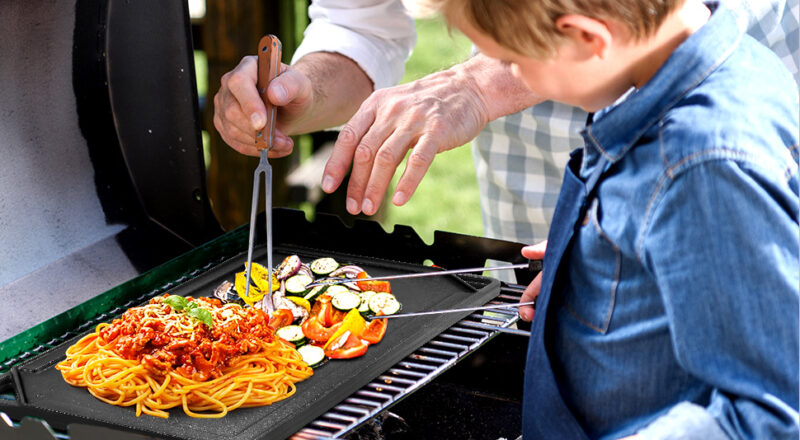When it comes to cooking, having the right tools is crucial. One such tool that has gained popularity in recent years is the reversible griddle. But what makes it so essential? A significant factor is the reversible griddle edge thickness. This aspect plays a vital role in how heat is distributed, the ease of handling, and the overall cooking experience.

What is a Reversible Griddle?
A reversible griddle is a versatile kitchen tool featuring two sides: a smooth surface and a ridged surface. This dual functionality allows you to cook a variety of foods, from pancakes to steaks, with ease. The edge thickness of the griddle is a critical component that affects its performance.
The Importance of Edge Thickness
The edge thickness of a griddle determines several vital factors, including heat retention, stability, and durability. Thicker edges mean better heat distribution and retention, crucial for achieving even cooking results. It also ensures the griddle remains stable on your cooking surface, whether it’s a stovetop or an outdoor grill.
Heat Distribution and Retention
One of the primary benefits of a griddle with optimal edge thickness is its ability to distribute and retain heat evenly. This quality ensures that your food cooks uniformly, preventing hotspots that can lead to uneven cooking.
Stability and Durability
A thicker edge provides better stability, reducing the risk of warping over time. This durability is especially important for kitchen professionals who use their griddles frequently. A stable griddle ensures safe and efficient cooking.
Choosing the Right Griddle Thickness
When selecting a reversible griddle, the edge thickness should be a primary consideration. But how do you choose the right thickness for your needs?
Consider Your Cooking Habits
Think about what types of foods you frequently prepare. If you often cook meats, a thicker edge may be beneficial for better heat retention. For lighter foods, a slightly thinner edge may suffice.
Material Matters
The material of the griddle also plays a role in determining the appropriate edge thickness. Cast iron griddles, for example, often require a thicker edge to support their weight and ensure even heating.
Budget and Brand
While thicker edges often come with a higher price tag, investing in a quality griddle can pay off in the long run. Research different brands and read reviews to find a griddle that meets your needs and budget. For guidance, visit our Griddle Buying Guide.
Maintaining Your Griddle
Once you’ve chosen the perfect griddle, proper maintenance is essential to prolong its life. Regular cleaning and seasoning can prevent rust and maintain the non-stick surface. For more tips, check out our Maintenance Tips.
Cleaning Your Griddle
After each use, clean your griddle with warm water and a soft brush. Avoid using soap, as it can strip the seasoning. If needed, our Care Dos and Don’ts offer helpful advice.
Seasoning for Longevity
Seasoning your griddle involves applying a thin layer of oil and heating it until it forms a protective coating. This process enhances the non-stick surface and prevents rust.
Conclusion
The reversible griddle edge thickness is a crucial factor that influences your cooking experience. By understanding its importance, you can select a griddle that meets your culinary needs. Remember, investing in a quality griddle and maintaining it properly will ensure delicious meals for years to come.

FAQs
Why is edge thickness important in a reversible griddle?
The edge thickness affects heat distribution, stability, and durability, all of which are essential for efficient and even cooking.
What materials are best for a reversible griddle?
Cast iron is a popular choice due to its excellent heat retention and durability. However, aluminum and stainless steel are also viable options depending on your needs.
How often should I season my griddle?
Regular seasoning is recommended, especially after each cleaning, to maintain the non-stick surface and protect against rust.
For more insights into the best foods to cook on a griddle, visit Traeger.
This article contains affiliate links. We may earn a commission at no extra cost to you.

